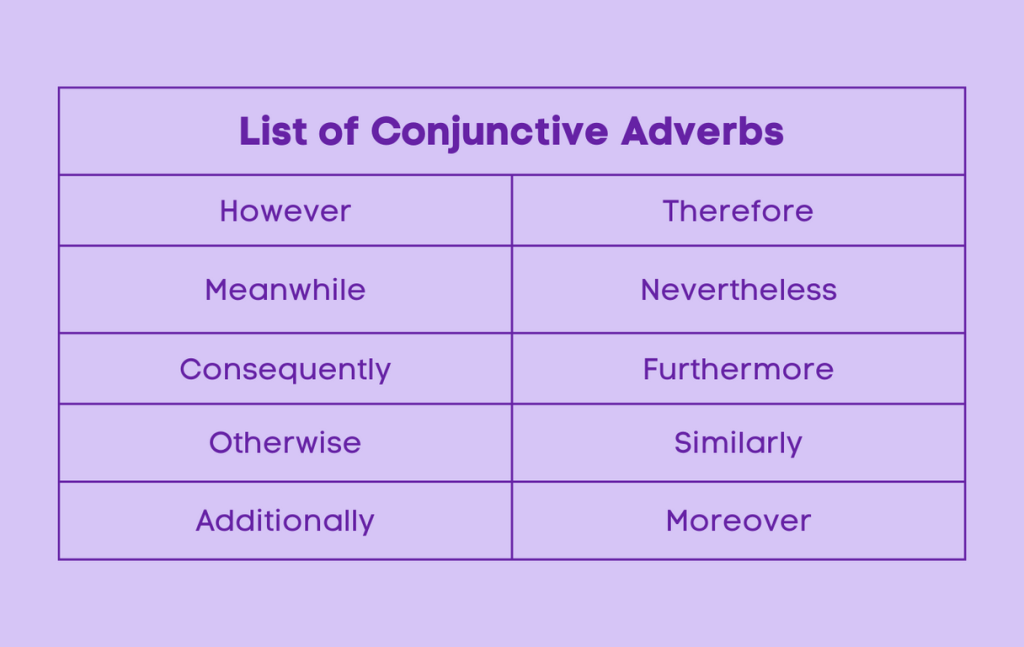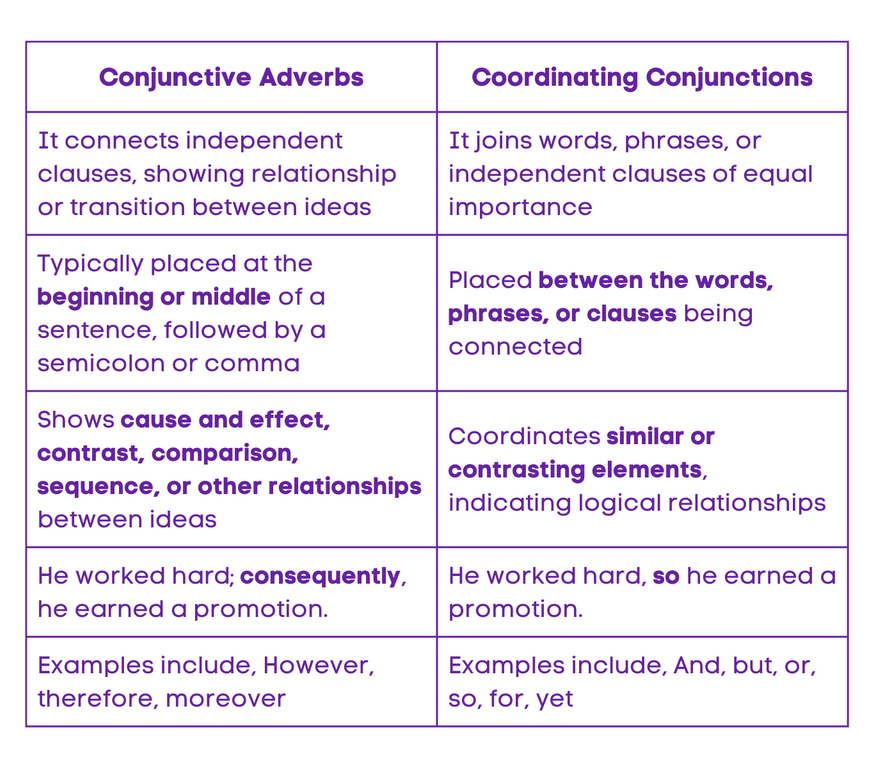What are Conjunctive Adverbs? – Meaning and Definition
Table of Contents
Introduction
Conjunctive Adverbs
Conjunctive adverbs are an essential part of writing, as they help to connect ideas, show relationships between clauses, and improve the flow of a sentence. Understanding how to use conjunctive adverbs effectively can elevate the quality of your writing and make your ideas more cohesive.
Analogy of Definition
What are Conjunctive Adverbs?
Conjunctive adverbs are words that join independent clauses or sentences together. They serve as transitions between ideas, indicating a relationship between the clauses. Unlike coordinating conjunctions, which are used to connect similar elements within a sentence, conjunctive adverbs connect entire sentences or independent clauses.
Method
Rules to Use Conjunctive Adverb
1.Use a semicolon before the conjunctive adverb, followed by a comma after it when connecting two independent clauses:
Example:She failed her driving test; therefore, she decided to take driving lessons again.
2.Place the conjunctive adverb at the beginning of the second clause, followed by a comma:
Example:She failed her driving test. Therefore, she decided to take driving lessons again.
3.Use a conjunctive adverb to show cause and effect, contrast, comparison, sequence, or other relationships between ideas:
Example: She studied hard; as a result, she passed the exam with flying colors.
How to Use Conjunctive Adverbs
When using conjunctive adverbs, it’s important to remember to punctuate them correctly. They should be followed by a comma when used to connect two independent clauses. Additionally, they should be placed at the beginning of the second clause to indicate the relationship between the clauses.
List of Conjunctive Adverbs

Conjunctive Adverbs vs Coordinating Conjunctions

Examples
Examples
1. I wanted to go to the concert; however, I had to work late.
2. She studied hard for the exam; therefore, she was confident in her abilities.
3. The team lost the game; nevertheless, they celebrated their efforts.
Quiz
Tips and Tricks
1. Punctuation Placement
Tip: Remember to place a semicolon before the conjunctive adverb when connecting two independent clauses, followed by a comma after it. For example: “She studied hard; therefore, she passed the exam.”
2. Positioning
Tip: Place the conjunctive adverb at the beginning or middle of a sentence to indicate the relationship between ideas. For instance: “However, she still decided to go.”
3. Variety
Tip: Experiment with different conjunctive adverbs to convey various relationships between ideas, such as cause and effect, contrast, comparison, or sequence.
4. Consistency
Tip: Maintain consistency in your use of conjunctive adverbs throughout your writing to ensure clarity and coherence.
5. Practice
Tip: Familiarize yourself with common conjunctive adverbs and their usage by practicing writing sentences that incorporate them effectively.
Real life application
Story: “The Writing Adventure of Sarah and Mark”
Sarah and Mark were two aspiring writers who embarked on a journey to improve their writing skills. Along the way, they encountered various challenges that required them to master the use of conjunctive adverbs in their writing.
Challenge 1: The Persuasive Essay
Sarah was tasked with writing a persuasive essay, and she wanted to emphasize the importance of her points. By using conjunctive adverbs such as “furthermore” and “moreover,” she was able to strengthen her arguments and create a more compelling piece.
Challenge 2: The Narrative Story
Mark was working on a narrative story that involved a series of events. To ensure a smooth transition between the events, he used conjunctive adverbs like “meanwhile” and “subsequently” to connect the different parts of the story and maintain the flow of the narrative.
Challenge 3: The Informative Article
In an informative article about travel destinations, Sarah used conjunctive adverbs such as “however” and “nevertheless” to highlight the contrasts between different locations and provide a balanced perspective for the readers.
FAQ's
Like? Share it with your friends
